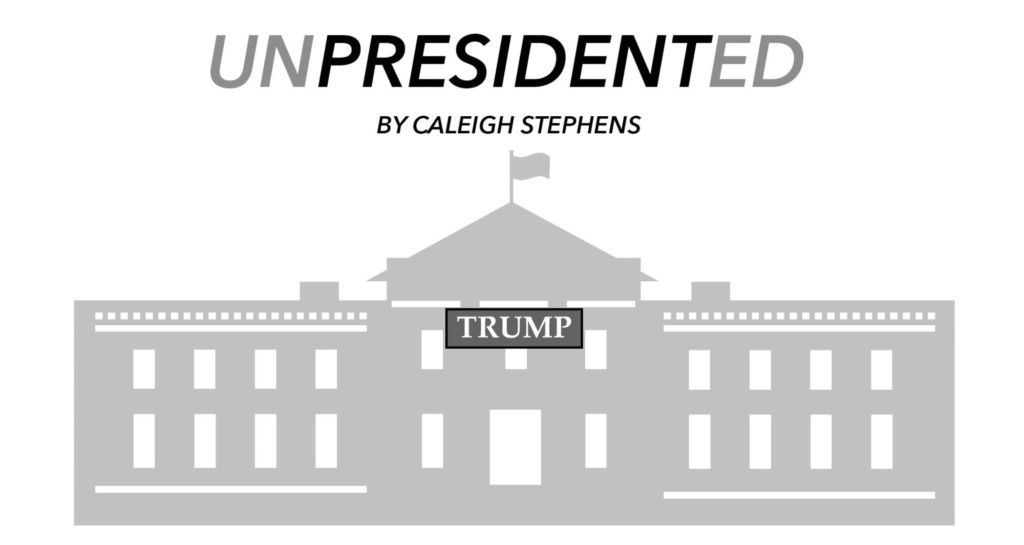
“UnPresidented” is a new column discussing the transition and first days of the Trump administration.
Even as President Trump has made reducing government spending a hallmark of his policy, increased military spending has always been on the table. In the first joint address of his presidency, Trump announced Tuesday that the defense budget would increase by a cool $54 billion. Details of what the increased budget would pay for were vague, but the sum will be taken out of other interior departments, with the Environmental Protection Agency and the State Department taking the most substantial hits.
Trump’s hawkish proposal matches GOP policy mainstays in increased defense spending. But a 2014 study by Pew Research found that only 23 percent of Americans (and 37 percent of Republicans) were in favor of increasing military spending. The same study found that a majority of Americans said that deficit reduction is more important than funding the Pentagon at current levels. Although there is a prevalent sense of American pride in the military and our troops, it is clear that the priorities of everyday Americans are at odds with Trump’s policy, as they should be. A bloated military budget at the expense of the taxpayer without much benefit to quality of life is a disservice to all Americans.
Some of this may have to do with an apparent downward trend of American engagement in the military since World War II. A study by Stanford University’s Hoover Institution found that despite public ideas of heavy U.S. military engagement, there has been a clear long-term trend towards the “strategic withdrawal of U.S. forces from the world.” In 2015 there were 1.3 million citizens in uniform, compared with 2 million in 1990 and 3 million in 1970. Yes, the numbers have dipped and peaked as a result of time periods with heightened military action, but the study invariably found a downhill slope.
Contrast this with the Department of Defense’s funding through the past 15 years, with a base budget increase from $384 billion to $502 billion between fiscal years 2000 and 2014 after adjustment for inflation, according to the Congressional Budget Office. Amid a gradual withdrawal of troops, shouldn’t the defense budget required decrease instead of skyrocket? Trump’s claim that the military is in dire need of federal funds is unfounded, with a budget that has been steadily increasing without the same expansion in military actions.
The defense budget from 2016 reached $604.5 billion, according to the nonpartisan International Institute for Strategic Studies (IISS). According to the think tank’s 2017 edition of its annual “Military Balance” report, the U.S.’s defense budget alone rivals the world’s next 15 largest defense budgets combined, and with the new budgetary increase, will surpass them by around $20 billion.
When shown in comparison to other defense budgets, the U.S. funding for our military is the picture of excess. The public image of a military scraping for funds is no doubt flawed. No country needs a military that size, especially one not actively in a declared war. In terms of proportion, budgetary numbers show a country more concerned with warfare than internal affairs.
Wouldn’t the money of our taxpayers be better used to protect the environment? Or provide foreign aid to those who need it most? Or establish peaceful diplomatic relations?
Not according to Trump. The choice to cut the State Department budget, the one department dedicated solely to foreign affairs, shows an administration more concerned with war than diplomacy. The many tenuous crises in the Middle East will not be solved by drone strikes.
Trump’s increased funding to the military is predicated on the idea that he’s strengthening the U.S., fortifying us against our enemies. It appears he believes the age-old adage that if you throw money at a problem it will just go away. The military isn’t suffering because of a lack of funds, but because of widespread inefficacy and inefficiency. Just last December, a Washington Post investigation discovered that the Pentagon had buried an internal study that found a gross misuse of funds resulting in $125 billion in administrative waste. The 2015 report by the Defense Business Board found that the agency could save nearly a quarter of their annual budget not by laying off civil servants or military personnel, but by streamlining the bureaucracy. Amid fears of Congress refusing to increase the budget as a result of the study and the dismissal of the idea of a military strained for money, the department imposed secrecy restrictions on the study, ensuring the data couldn’t be replicated.
This all begs the question, why should American taxpayers supply another $50 billion to a department that would rather waste than resolve issues? We need a military that is effective—not one that is more flushed with cash.
The annual IISS report came to the same conclusion about the U.S. and other NATO member countries. The report found that the best course of action for NATO is not to emphasize increasing spending, but instead focus on output. Seems simple enough.
With the end of the Iraq War in 2011 and a steady de-escalation of U.S. military in Afghanistan, it no longer makes sense to devote such a large swathe of our federal budget to defense. If his budget accurately depicts his priorities, American taxpayers will see their money wasted. Congress has yet to approve anything, but such an increase is without an upside.







